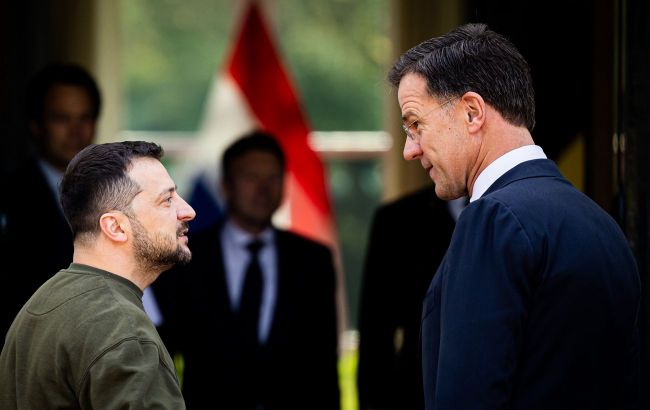Europe seeks an alternative to US intelligence to support Ukraine
 Photo: President of Ukraine Volodymyr Zelenskyy and NATO Secretary General Mark Rutte (Getty Images)
Photo: President of Ukraine Volodymyr Zelenskyy and NATO Secretary General Mark Rutte (Getty Images)
Allies of Ukraine are looking for ways to compensate for possible intelligence losses if the US stops sharing information due to Kyiv’s disagreement with the proposed peace plan according to Politico.
On the sidelines of the Halifax International Security Forum, experts discussed how countries could replace or supplement US intelligence for Ukraine.
James Appathurai, acting head of NATO’s DIANA defense innovation program, emphasized the uniqueness of US capabilities but noted that modern commercial technologies, especially satellite reconnaissance, can partially fill the gaps.
He cited the Finnish company ICEYE, which provides mobile satellites to European countries and already supplies data to Ukraine. However, adapting these new technologies takes time and significant resources, while Kyiv’s needs are urgent. ICEYE currently has 5–10 sovereign satellites in orbit and plans to launch 10–15 more over the next two years.
European officials noted their own systems, including Galileo and Copernicus, but admitted gaps in areas like satellite internet, where Starlink has no immediate alternative until the EU’s IRIS² network is expected by 2030. Meanwhile, the EU is integrating national resources to support Ukraine.
Canada is also prepared to partially offset potential intelligence gaps. Previously, it provided RADARSAT-2 imagery, which helped Ukraine monitor border activity. General Jenny Carignan, head of the Canadian Armed Forces, said that without US support, long-term strike accuracy could suffer, but alternative means, including drones, could partially mitigate the problem.
No US military representatives attended the forum, so European and NATO officials are only assessing the risk of a US intelligence cutoff.
US peace plan for Ukraine
The recently revealed US 28-point plan aims to end the war. Developed jointly by the US and Russia, it calls for Kyiv to concede parts of Donetsk, Luhansk, and the occupied areas of Kherson and Zaporizhzhia, in exchange for security guarantees. Additional conditions include reducing the Ukrainian army and banning NATO membership.
President Donald Trump set a November 27 deadline for Ukraine to accept the plan, warning of worsened conditions otherwise. On November 22, he clarified that the agreement text is not final and could still change.
Politico reports that if Kyiv refuses to sign, it risks losing US military and intelligence support.
President Volodymyr Zelenskyy described the situation as a difficult choice between preserving dignity and risking the loss of a key ally. He pledged that at the November 23 Geneva meeting with representatives from Ukraine, the US, and the EU, he will defend Ukraine’s national interests.
According to The Washington Post, European leaders have prepared counterproposals to Trump’s plan, which would restore Kyiv’s control over strategic assets without imposing restrictions on the Ukrainian armed forces.

